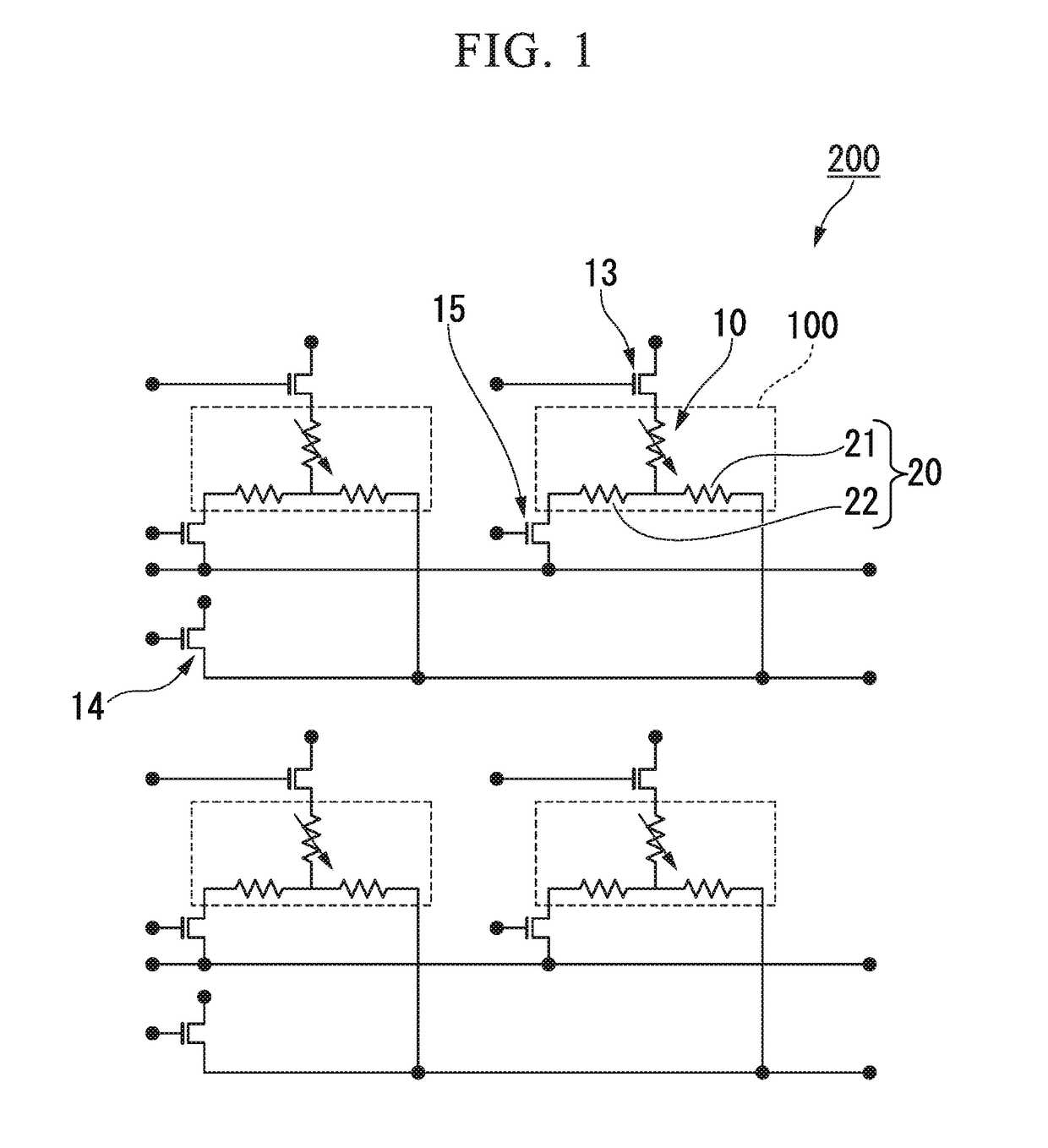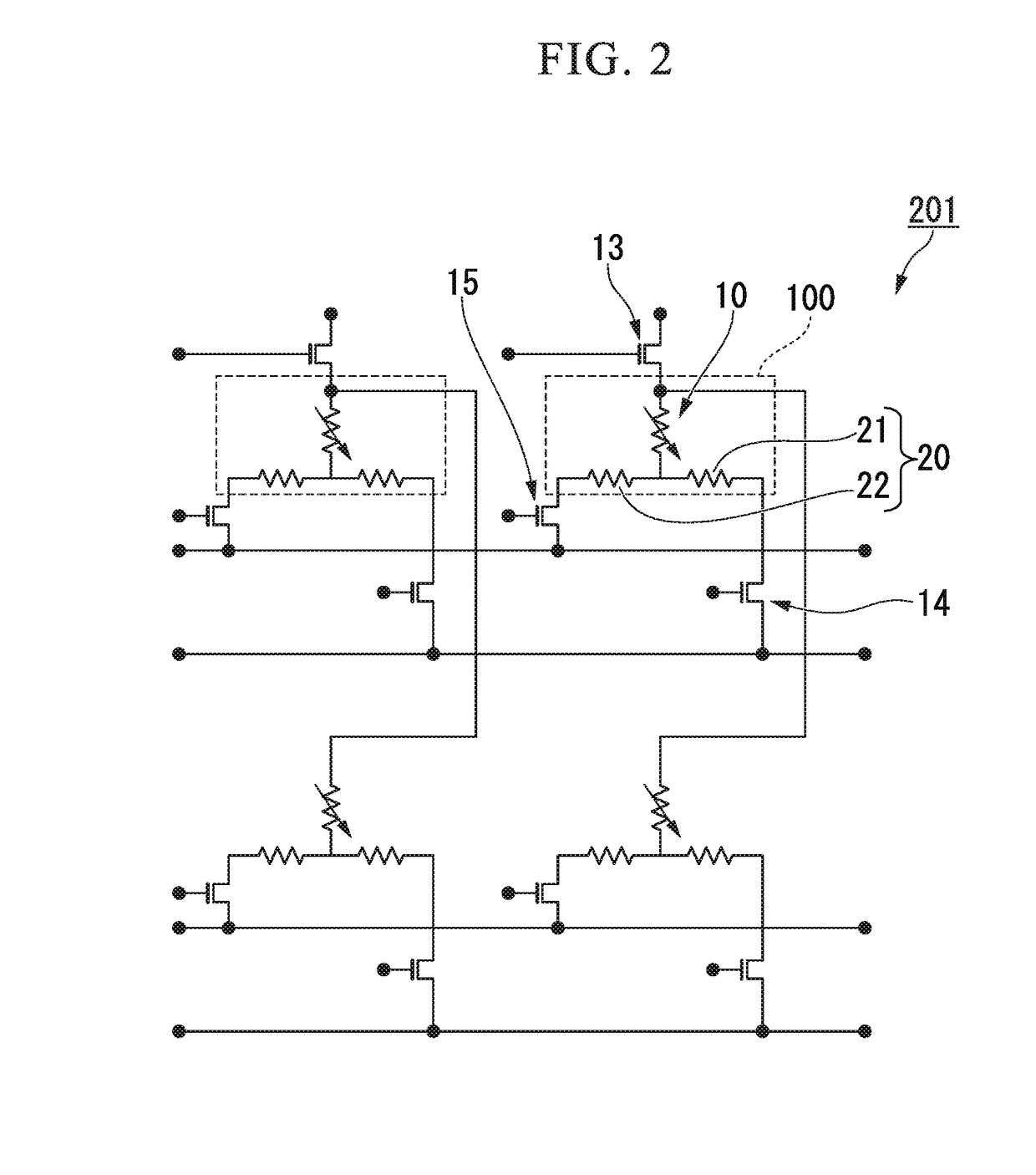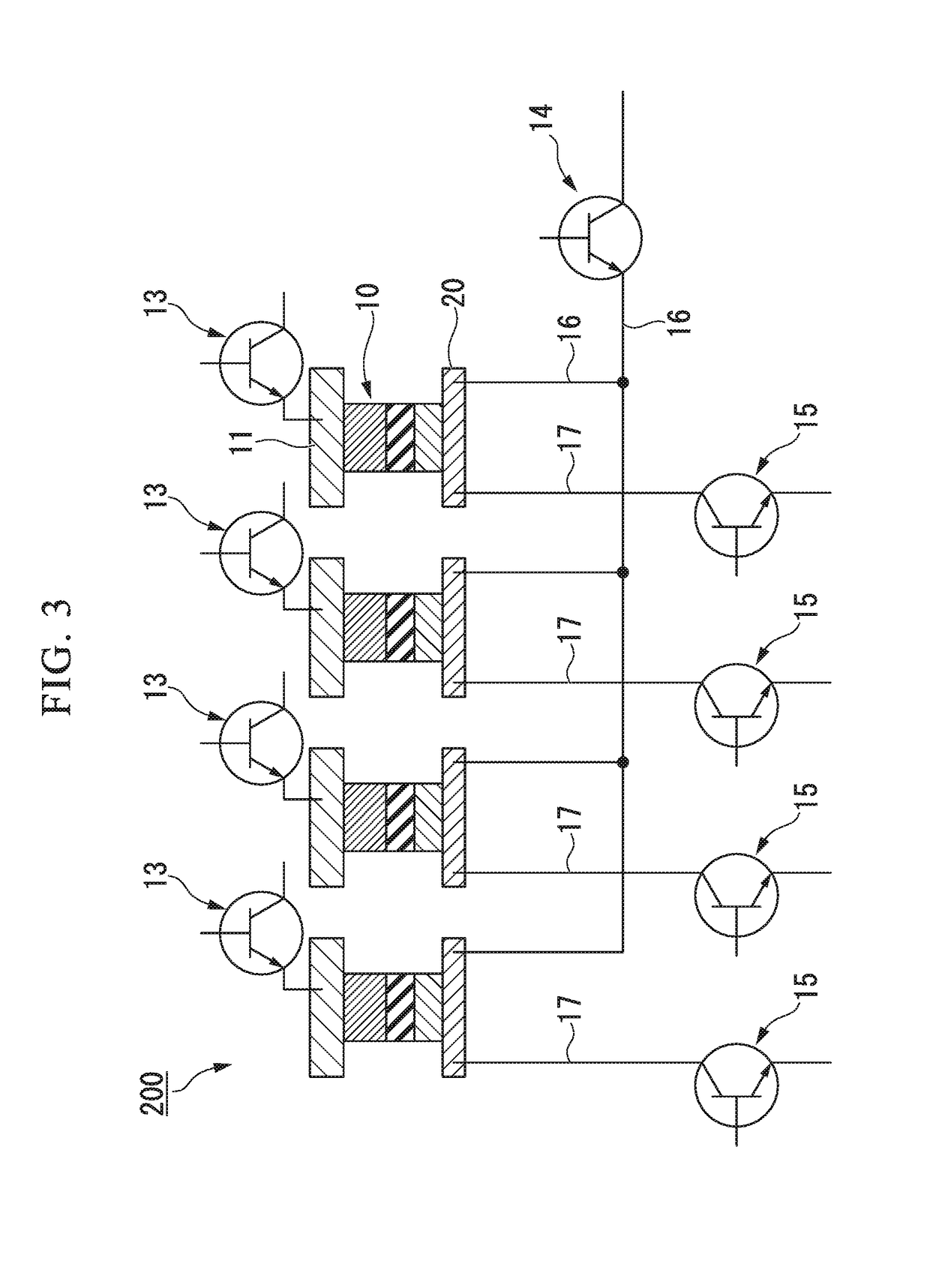Magnetic memory
- Summary
- Abstract
- Description
- Claims
- Application Information
AI Technical Summary
Benefits of technology
Problems solved by technology
Method used
Image
Examples
first embodiment
[0039]FIG. 1 and FIG. 2 are circuit diagrams of a magnetic memory according to the present embodiment. A magnetic memory 200 includes a plurality of drive elements 100. The drive element 100 includes a magnetoresistance effect element 10 and a spin-orbit torque wiring 20. In the circuits in FIG. 1 and FIG. 2, the spin-orbit torque wiring 20 is shown as resistors 21 and 22. Current leakage during writing and reading is low in both the magnetic memory 200 shown in FIG. 1 and a magnetic memory 201 shown in FIG. 2, which function as magnetic memories.
[0040]In the magnetic memory 200 shown in FIG. 1 and the magnetic memory 201 shown in FIG. 2, a first control element 13, a second control element 14, and a first cell selection element 15 are connected to one drive element 100. Known transistors such as a field-effect transistor (FET) are used for such control elements.
[0041]When the first control element 13 and the first cell selection element 15 are operated (are brought into an “ON” sta...
second embodiment
[0127]FIG. 9 is a schematic diagram of a circuit structure of a magnetic memory according to a second embodiment. FIG. 10 is a schematic perspective view of the circuit structure of the magnetic memory according to the second embodiment. In addition, FIG. 11 is a schematic cross-sectional view of a main part in the vicinity of a magnetoresistance effect element of the magnetic memory according to the second embodiment. Components the same as those in the first embodiment will be denoted with the same reference numerals.
[0128]A magnetic memory 204 according to the second embodiment is different from the magnetic memory 200 according to the first embodiment in that a fourth wiring 40 and a second cell selection element 41 are included.
[0129]The fourth wiring 40 connects the magnetoresistance effect elements 10 to the second cell selection elements 41. One end of the magnetoresistance effect element 10 of the fourth wiring 40 is connected to a third connection point 20C. The third conn...
third embodiment
[0138]FIG. 12 is a schematic diagram of a circuit structure of a magnetic memory according to a third embodiment. FIG. 13 is a schematic perspective view of a circuit structure of a magnetic memory according to the third embodiment. In the drawings, components the same as those in the first embodiment will be denoted with the same reference numerals.
[0139]A magnetic memory 205 according to the third embodiment is different from the magnetic memory 200 according to the first embodiment in that a data erasing element 50 and a fifth wiring 51 are included.
[0140]As shown in FIG. 12 and FIG. 13, the data erasing element 50 is connected to the third wirings 17 connected to the spin-orbit torque wirings 20. The data erasing element 50 is connected to the second connection point 20B of the spin-orbit torque wiring 20 through the fifth wiring 51 and the third wirings 17.
[0141]A known switching element can be used as the data erasing element 50. For example, a transistor element represented b...
PUM
 Login to View More
Login to View More Abstract
Description
Claims
Application Information
 Login to View More
Login to View More - R&D
- Intellectual Property
- Life Sciences
- Materials
- Tech Scout
- Unparalleled Data Quality
- Higher Quality Content
- 60% Fewer Hallucinations
Browse by: Latest US Patents, China's latest patents, Technical Efficacy Thesaurus, Application Domain, Technology Topic, Popular Technical Reports.
© 2025 PatSnap. All rights reserved.Legal|Privacy policy|Modern Slavery Act Transparency Statement|Sitemap|About US| Contact US: help@patsnap.com



